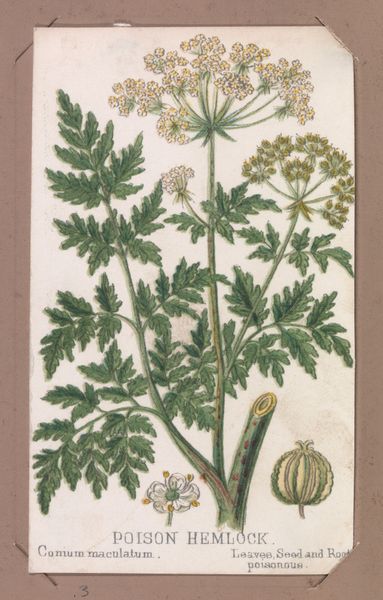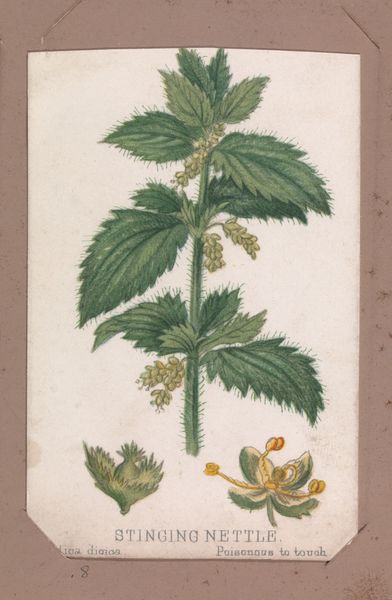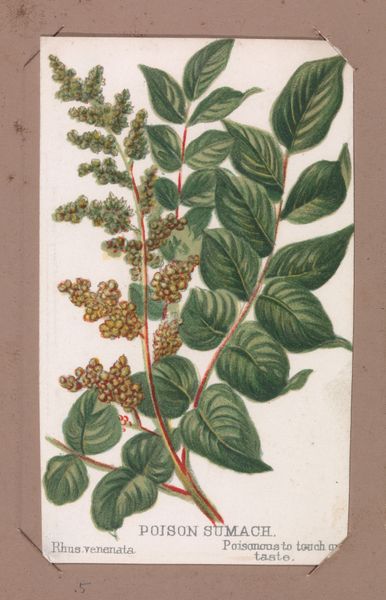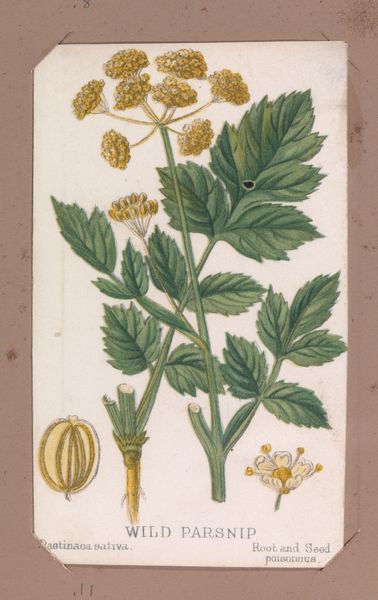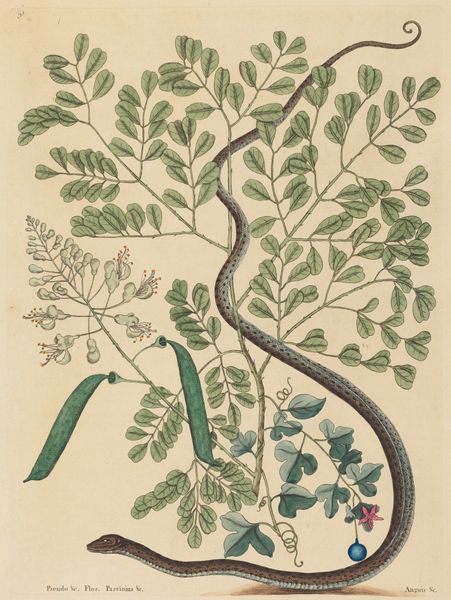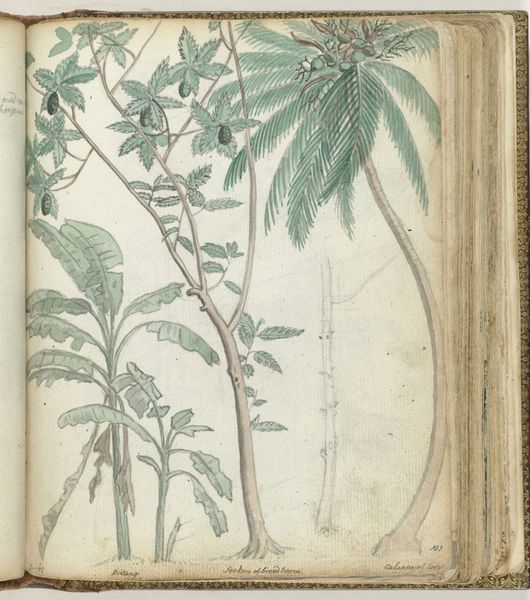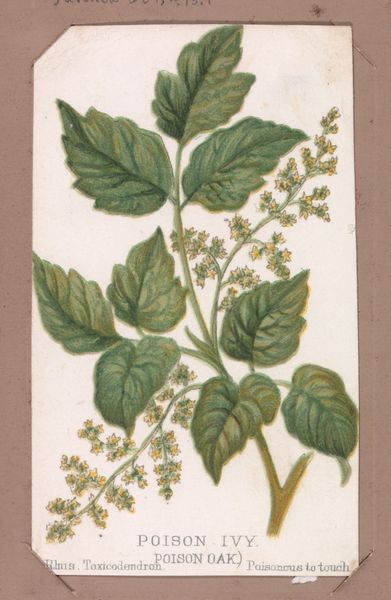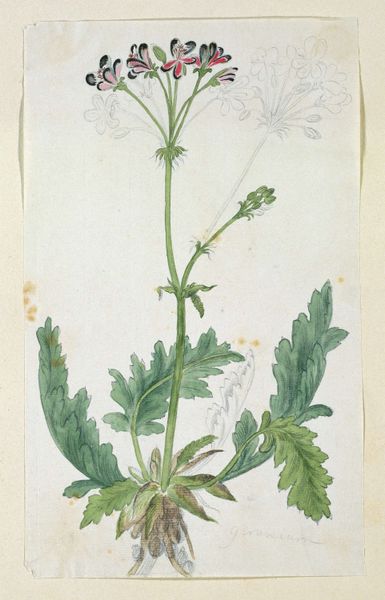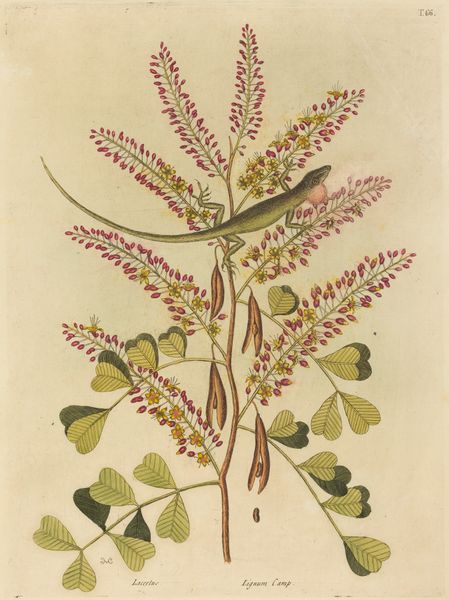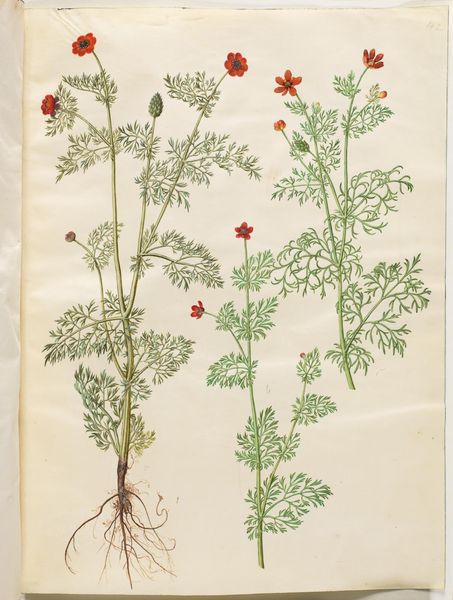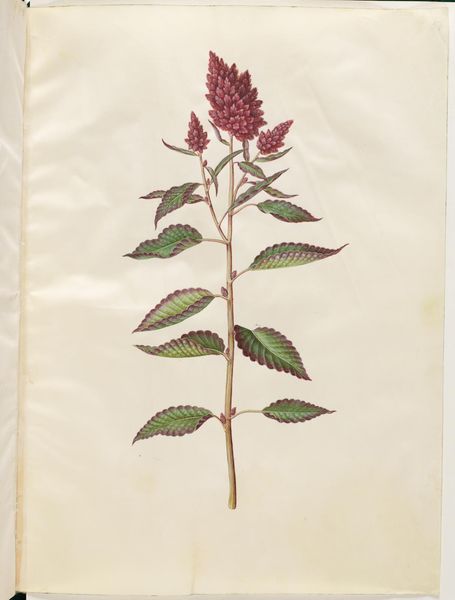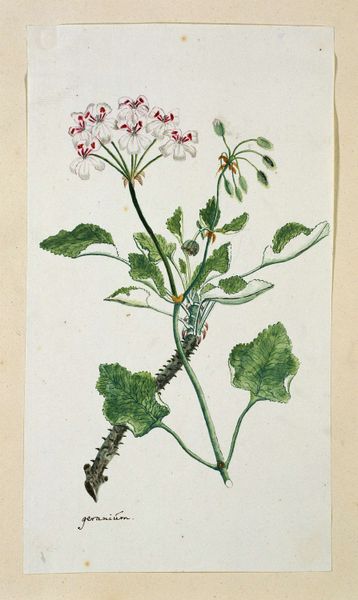
drawing, coloured-pencil, print, watercolor
#
drawing
#
coloured-pencil
#
water colours
# print
#
watercolor
#
coloured pencil
Dimensions: Sheet: 3 7/8 × 2 3/16 in. (9.8 × 5.6 cm)
Copyright: Public Domain
Editor: So, this is "Water Hemlock from the Plants series" by Louis Prang & Co., made sometime between 1862 and 1869. It looks like a watercolor print with some colored pencil details, currently residing at the Met. There's a real delicacy to the rendering, a certain kind of scientific precision, but also a definite somberness, perhaps because I know hemlock is poisonous. What strikes you when you look at this work? Curator: What I find compelling is how this print sits at the intersection of scientific illustration and popular culture. Consider the social context: mid-19th century, a burgeoning interest in botany amongst the middle classes, fostered by accessible books and prints like these. Prang & Co. mass-produced these, democratizing access to knowledge about plants, even poisonous ones like hemlock. Editor: So it's not just art for art's sake? It’s also serving some kind of purpose. Curator: Exactly! Think about the power of imagery, particularly in an era before widespread photography. These prints shaped public understanding, almost serving as visual textbooks. And notice how the plant is isolated against a plain background – a very deliberate choice, ensuring clarity for identification purposes. Don't you think that isolation lends to that scientific mood you mentioned? Editor: Absolutely, now that you mention it! The stark presentation removes any distraction, forcing you to focus solely on the plant's features. It also reminds me a bit of specimens pinned in a museum display. Curator: Precisely! The museum’s influence! And in bold letters “Juice, Root and Seed poisonous.” What’s the effect of that information so prominently displayed, juxtaposed with its delicate beauty? Editor: It really complicates things! It's both informative and slightly… ominous? It kind of transforms this seemingly innocent botanical study into something a bit more charged. It seems educational, but it’s dealing with really potent knowledge. Curator: Yes! I think the combination speaks volumes about the cultural fascination with, and anxieties surrounding, the natural world in the 19th century. It highlights both the beauty and the inherent dangers of nature. Editor: That's fascinating. I hadn't considered how much societal context is embedded in this seemingly simple image of a plant. Thanks for broadening my perspective. Curator: And thank you for pointing out that initial somber mood; it really set the stage for this deeper analysis.
Comments
No comments
Be the first to comment and join the conversation on the ultimate creative platform.
